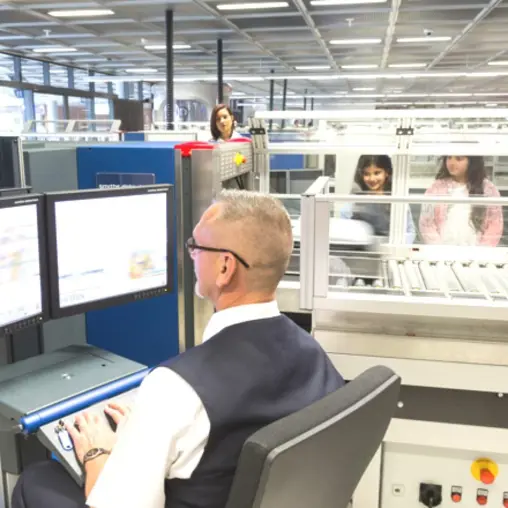Despite significant advances in technology, the human element remains a critical factor in checkpoint security. Even the most cutting edge systems and processes won’t reach their full performance and benefit potential unless the operating team has the right skills, knowledge and motivation.
Complex skill set
Security screening is one of the most difficult roles in an airport. To successfully balance security with customer service, screening staff require a complex blend of process management, problem solving, communication and critical task specific skills. Teams are always under pressure to be productive, efficient and friendly, whilst not taking risks when confronted with potential threats.
Effective supervision is essential to maintain high levels of execution and support the lane crew in areas such as dispute resolution and regulation clarity. Well trained, motivated and managed teams can achieve significant improvements in lane performance compared to less effective operations using the same equipment.
Although costs and service levels will always be central, mandatory tasks and regulations will never motivate people in the same way as protecting passengers and staff. The threats facing airports are constantly evolving from guns, to explosive devices and on to liquid explosives and whatever comes next, people can respond to new danger much faster than technology can be developed.
Security personnel are continually making the situation assessments needed to resolve each and every alarm generated by the technology; and must be willing to take some very uncomfortable decisions when presented with evidence of a threat – from further search procedures in the face of disgruntled passengers to evacuating the terminal. They may be wrong about the threat but they have to make a judgement based on risk.
Changing role
The role of the security screening crew is not only complex but also transformational. Much of the developing technology increases security standards and, at the same time, can improve both throughput and passenger experience. This is driving new processes and a shift in requirements from the checkpoint team. For example, automation is reducing manual tasks but increasing the demand for the good communication skills needed to guide people through the new procedures.
Bearing in mind the technology cannot effectively deliver without the involvement of people, it is critical for the equipment to be designed with both task and operator in mind – the Human Factors. In day to day life, we all experience the frustrations of badly conceived interfaces on electronic devices and the principle is the same with security screening.
Two-way street
It seems that when it comes to checkpoint security, man and machine definitely need each other and must work in harmony. Advances in technology help improve security, streamline the process and increase productivity through automation – but neither the equipment nor the operators can reach optimum performance without the other.
The team must remain vigilant in order to make the right decision over and over and over again. Although the latest generation systems can assist in that decision-making, this must not overshadow threat awareness which makes the right training and management even more important.

